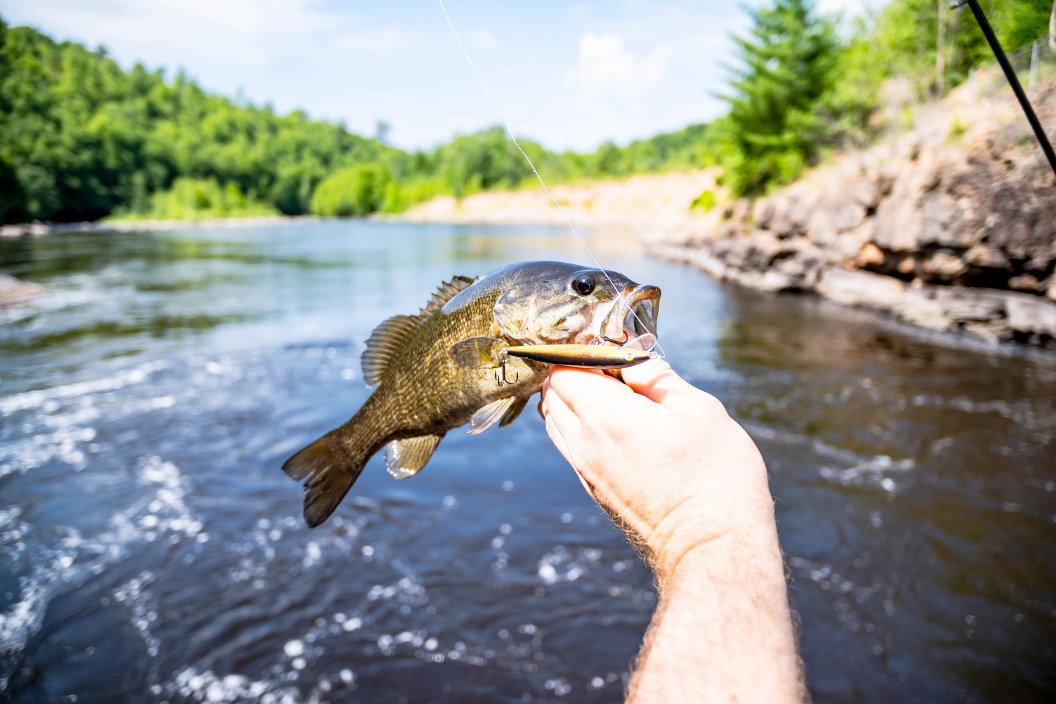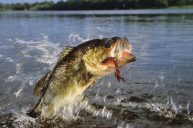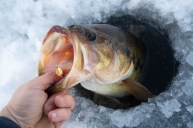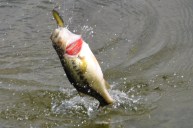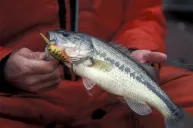Whether it's your first time spring bass fishing or you polished all your gear the second the ice disappeared off your local lake, the season is upon us. Bass are one of the most fun species to catch (and definitely the most popular) but doing so in the spring when they're pre-spawn or spawning is definitely an art.
Spring bass fishing can be simple and very successful, and yet it can simultaneously be more work—but we would all rather be out there trying than at home, wishing we were.
If you haven't gotten to hunt bass in the spring before, we've got a lineup of bass fishing 101 tips for you. And if you spend all winter dreaming of those double-digit largemouths, well, you could also use a refresher as you dust off your well-honed skills after a long winter. After all, who doesn't want to up their chances of landing as many of these fish as possible each season while we wind on a fresh spool of line?
READ MORE: Post-Spawn Bass Fishing: How to Hook Them When They're Tired and Hiding
With that in mind, I've called on decades of my own experience spring bass fishing—as well as chatting endlessly with buddies about it—to drum up the top tips for what's special about hooking bass in those early days of sunshine and spring weather.
Whether you're casting in the river or floating on top of your favorite honey hole, I've found these spring bass fishing tips work when nothing else will.
What's Different About Spring Bass Fishing?

Getty Images, SeventyFour
Fishing for bass in the spring is a very different animal than warm-weather or summer bass fishing.
That's largely because of:
- The variable water temperature
- The type of natural bait in this season, and
- The fact that the fish are driven by their spawning cycle (in spring, you're always fishing right before, during, or right after it).
All these factors change the fish's behaviors.
Bass will be more sensitive to temperature than anything else as the water warms up; you'll often see them moving in and out of shallow water in the early season. Many bass will take up station over bottoms that absorb plenty of sunshine, making these places warmer than other transiton areas.
In area that offer some protection, smallmouth bass can be seen spawning before their largemouth cousins, but are easily spooked and will swim away at the first sight of a boat, kayak, or canoe. The same goes for largemouths, but at a pace that comes when the water gets a little warmer.
Why Water Temperature Matters
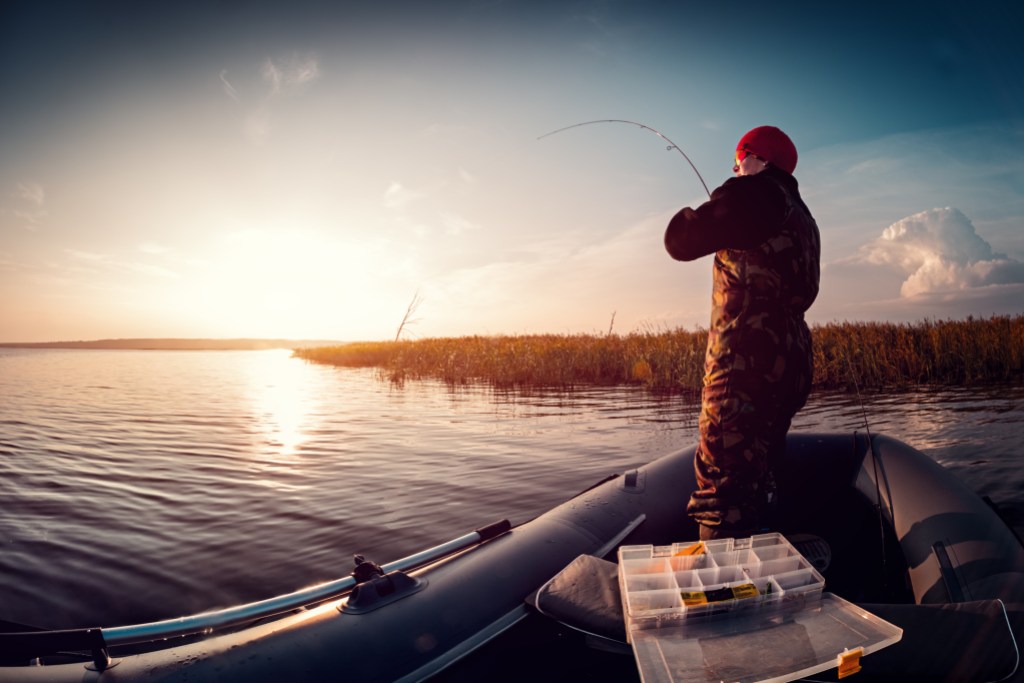
Getty Images, mihtiander
The temperature of the water this time of year determines whether the bass will even be present under your hook.
Largemouth bass begin their spawning in warmer waters with temperatures around 55 and 65 degrees; smallmouth like it a little cooler in the 50 to 60-degree range. And bass that have been stuck residing in deeper water with less light all winter are just as anxious to follow the warming temps.
In areas that haven't reached these prime temperatures, bass can still be found and caught, but they can still be a bit lethargic and need some coaxing.
What that means for you: In general, shallower, easier-to-reach places are going to be warmer and hold more bass. I like to keep a simple fishing thermometer in my daypack or tackle bag for a quick check of the temp—especially since there are a lot of variables at play here. For example, if you've been having warmer nights, the faster the water will warm up to create actively feeding pre-spawn bass.
Understanding What Spawn Phase the Bass Are In
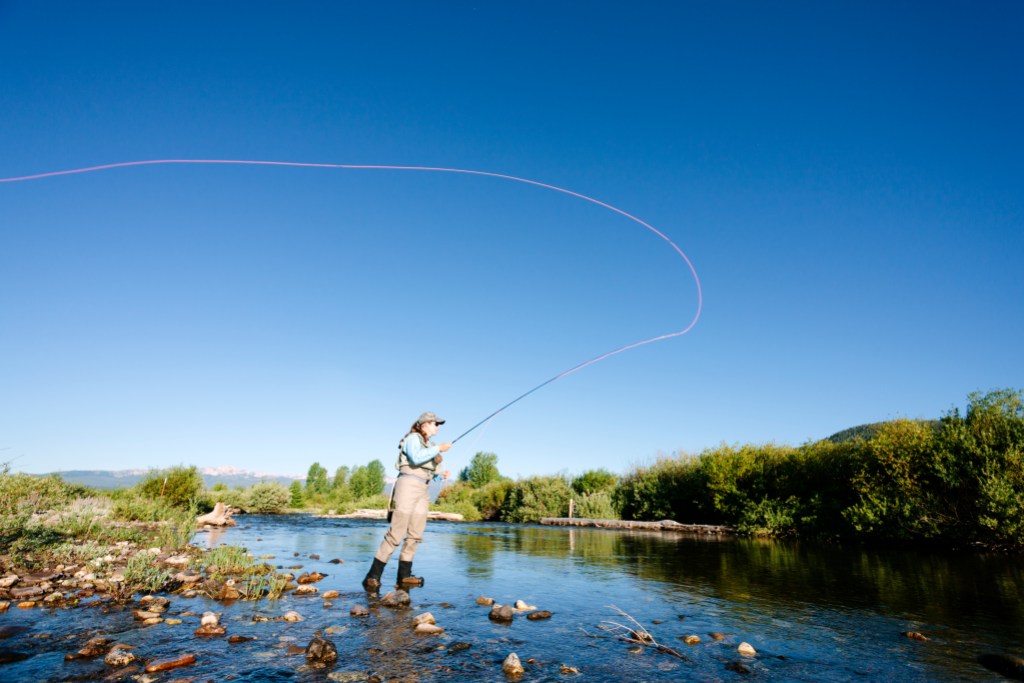
Getty Images, urbancow
All smallmouth and largemouth bass spawn in early spring in the southern states and in late spring in the north—but they don't all spawn at the exact same time, even if they're in the same body of water.
Because of that, it's important to understand how differently bass act depending on what phase of reproduction they're in.
If you're starting to see bass consistently staying close to one area, it may mean that there is a spawning bed nearby and that the female is getting ready to lay her eggs.
Fishing Pre-Spawn Bass
Before bass reach their spawning grounds and start their spawning cycle, they become super active in the warming water and turn into feeding. As nature has dictated, forage species, such as crawfish, begin to emerge, which makes making them a top menu item—and therefore one of the best patterns to try at this time.
It's not just the bass that are spawning though: Shad, bluegill, bream, and other baitfish will start to show up in the shallower waters to spawn as well, and hungry bass are thrilled to take full advantage of the new meal.
What that means for you: Look for pre-spawn bass in ambush areas around rocks, stumps, weeds, and dock areas; this is where they commonly try to feed as its close to their spawning zones.
Then, use bait patterned after crawfish, or any bait with a flash to mimic the smaller pre-spawn species.
Fishing the Spawn
Bass take roughly 10 to 14 days to complete their spawning cycle, during which time they go on a virtual hunger strike. Since they began the open-water season by feeding until they nearly burst, they can afford to tend to their business and protect their eggs or newly hatched fry without feeding.
But while that means they're not going to be as willing to take your offerings, you can still coax them into striking with a little effort.
While you can fish the pre-spawn in murkier water because the bass are actively searching out food, by the time the spawn rolls around, environmental conditions can dictate that the water has settled down and can be quite clear. This is particularly true in streams and rivers that have a heavy flow from the spring snow melt which can clear up in time, exposing likely haunts for these fish.
What that means for you: When the water is clear, sight-fishing is the obvious tactic. You will need all of the stealth that you can muster. But laying a finesse worm or jig on or near an active spawning bed can cause an angry strike reaction from a protective male or an "inhale and spit" response from the female—so have a good pair of polarized glasses and be quick because many times a bass in protection mode will only have your bait in its mouth for a moment.
Understanding Bass Spring Location Preferences
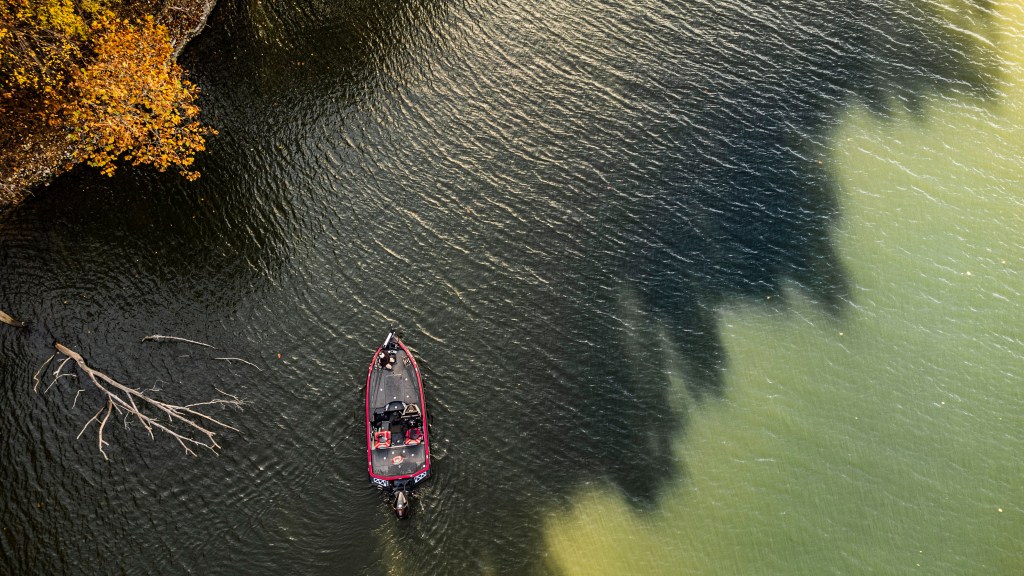
Getty Images, Creating Outdoors
1. Look for bass hiding in deep holes and side channels.
In rivers and streams, bass will lay just out of the current, next to deeper holes once they've come in following the warm-water flows. Smallmouths in particular can be found here in the spring, and will willingly-strike stickbaits, spinners, and swimming jigs tipped with a soft plastic.
Both smallmouths and largemouths will spawn far into other, slower backwaters and eddies that border the main water-flow on a stream or river, where they can build a nest that's less likely to be disturbed by channel current or other distractions (like boaters).
In lakes and ponds, similar off-the-beaten-path areas will have the cover of the emerging weeds to give the fish a sense of protection.
What that means for you: Targeting these fish can be incredibly successful using smaller soft plastics tied onto a good quality fluorocarbon line. Then, fish patiently by feel, letting the bait fall right into their lap. Stealth and a light casting-touch are imperative here.
2. Look for bass hiding from people and movement.
On lakes where the human activity increases after the start of spring, bass will seek out sheltered areas away from the action. You will find bass far out into the grass where boat wakes have long since dissipated and few people go without a canoe or a kayak.
What that means for you: Logs, stumps, and rock piles will hold a bass or two, especially if there is some shade to be had. One of the best places to find spring bass is around and under docks, which may seem counterintuitive to not wanting to be disturbed, but here they're protected from human interaction and, for some reason, they seem to seek the area out.
The best way to fish these spots is to start casting from a distance with baits that don't unsettle the fish (like soft plastics). However, sometimes a small spinnerbait cast nearby the hiding bass can cause a reaction strike, letting you know that fish are present and then you can proceed with more caution.
The Best Technique for Spring Bass Fishing
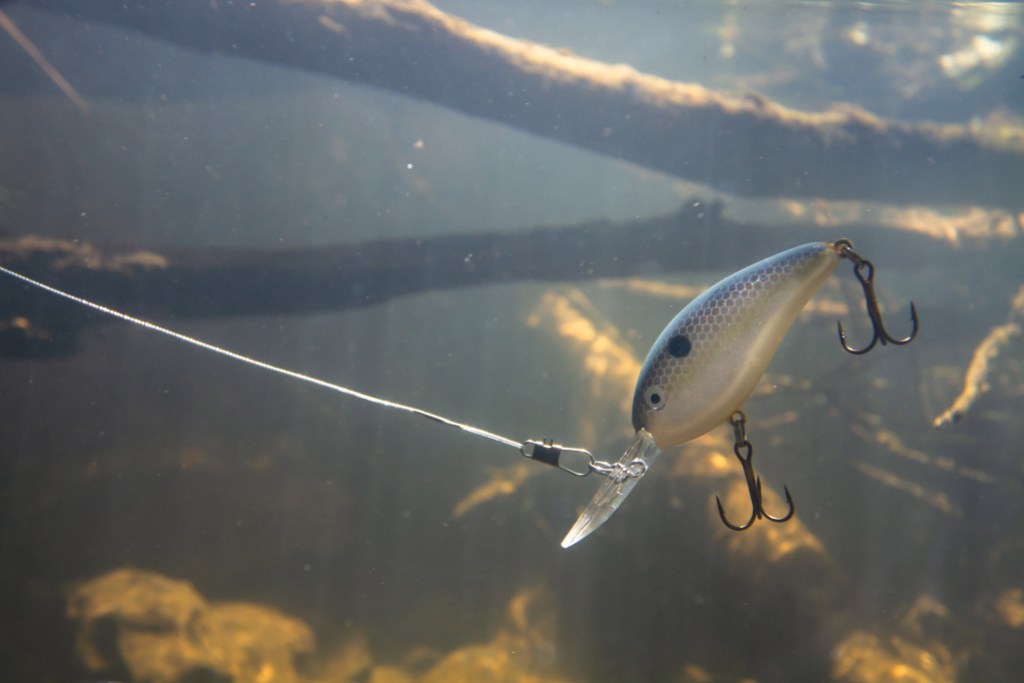
Getty Images, PavelRodimov
In some lakes, even actively-feeding, early-spring bass can still be in deeper waters chasing emerging bait, especially crawfish.
What that means for you: Deep-diving crankbaits and suspending stickbaits get down to where the most active bass are and stay in the strike zone longer. Banging your lure off of a rock pile or stirring up the bottom silt will give your bait the action of escaping prey, making it all the more attractive to bass. In slower, shallower waters that are starting to warm up, a small floating stickbait or shallow running crankbait worked slowly on the surface can entice some bone-jarring strikes from bass that don't have to work hard to eat it.
Read More: 10 Best Spring Bass Lures
